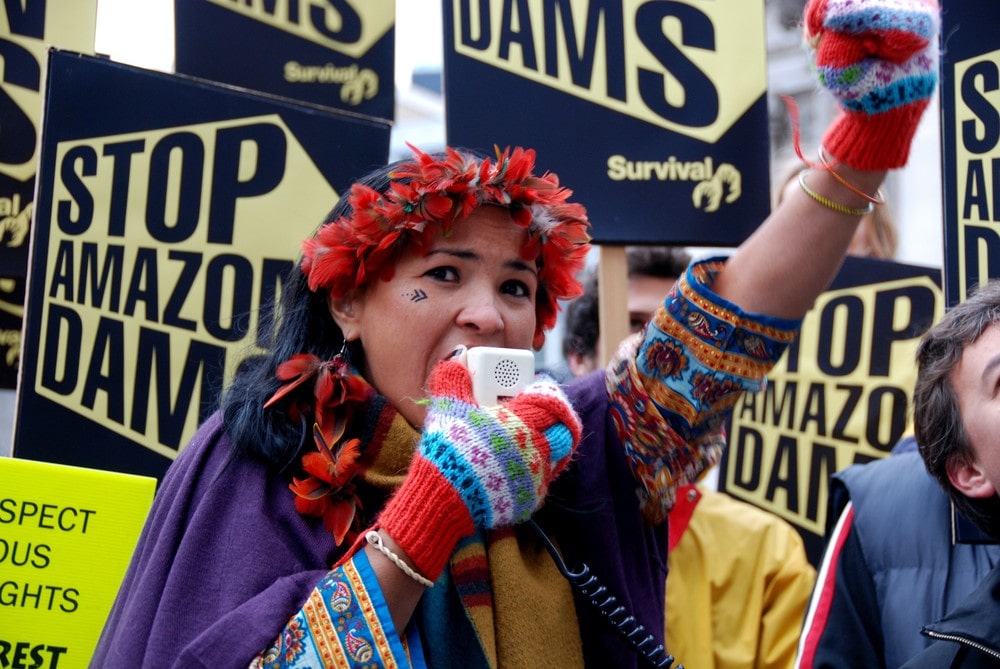- About
- Topics
- Picks
- Audio
- Story
- In-Depth
- Opinion
- News
- Donate
- Signup for our newsletterOur Editors' Best Picks.Send
Read, Debate: Engage.
| November 28, 2016 | |
|---|---|
| topic: | Peace and Reconciliation |
| tags: | #oblivion, #Peru, #Villa El Salvador |
| located: | Peru |
| by: | Maria Clara Montoya |
Peru suffered an internal conflict from 1980 until 2000 that finished with 70.000 victims according to The Peruvian Truth and Reconciliation Commission (TRC). The war between the maoist Peruvian guerrillas Shining Path, Tupac Amaru Revolutionary Movement (MRTA) and the Peruvian government brought suffering, more poverty and division in the Andean country.
One of the most affected districts in Lima was the neighborhood of Villa El Salvador, a shantytown in the South, born in 1971 under a big community texture. Hundreds of thousands migrated for causes as diverse as their origins: people from the rural areas of Ayacucho, Apurimac, among others, came in search of a new life because of the economic instability and terrorism.
The foundation of “Villa” is very particular because the dwellers arranged everything to satisfy their basic needs. For this reason, the shantytown was “more vulnerable than any other area in Lima” because it is “an experience full of citizen participation that does not belong to the government nor Shining Path”, former mayor Michel Azcueta says.
The first incursion of Shining Path in Lima was in Villa El Salvador in 1985. A bomb exploded in an education center but that was not the only crime. Because of the notoriety of Villa, awarded in 1987 with the Prince of Asturias Award for Concord for being “the biggest urban-popular experience in Peru”, the terrorists increased their attacks in the area.
The most significant was the murdering of the Deputy Mayor and feminist leader María Elena Moyano in February 1992. Six weeks after, President Alberto Fujimori staged a “self-coup” that brought more political violence including disappearances and torture according to the TRC.
After the coup, citizen mobilization and community texture decreased because those practices were related with socialism and left-wing politics, something unpopular under Fujimori dictatorship.
Nevertheless, Villa El Salvador is still nourished of organizations working in the area to “open opportunities and transmit the cooperative spirit from elders to youngsters”, explains Edwar Jiménez, a member of Southern Youth Network (Red Joven Sur).
Arenas y Esteras (Sand and mats) is a theater group and school that has promoted neighborhood culture for more than twenty years, starting with their name, which alludes to the elements that the settlers deployed when they occupied the land.
The group has taught the history of Villa El Salvador to the children in schools and they have far exceeded the theatrical experience, promoting the empowerment of youth in the district with programs like ‘Chibolos unidos’ (‘United kiddos’), active from 2000 to 2005, where their members instructed youngsters in activities like music or circus for free.
That experience grew the interest in community activism in people like Jimenez and Jessenia Cutipa, both in their mid-twenties. Cutipa belongs to PAZOS organization, which educates throughout arts.
In her opinion, there is a “general lack of interest” in community issues. “When I go to meetings with leaders, most of the people are between 50 and 60 years old and that shows that the word has not been spread to the youngest people here”, Cutipa regrets.
Southern Youth Network members, who teach photography, music and leadership, witnessed the abandon of the community premises. “Most of them have fell into disuse just because we have covered basic needs like running water and electricity, and although that isn’t enough for ‘Villa’, leaders won’t see it’”, Jimenez says.
Meanwhile, Cutipa highlights that PAZOS constitutes a hotbed of ideas. Like Southern Youth Network, all their members combine work with study and most of the times they self-finance their activities. As well as Jimenez, she emphasizes the value of Arena y Esteras because their workshops “let us know other realities different from gangs, early pregnancy or violent love”.
Today, Villa El Salvador has running water, electricity and some paved roads. What was a deserted 32 square kilometers of extension, turned out to be a district with its own idiosyncrasy because of the collaboration of their settlers. Cutipa, Jimenez and many others have a big challenge: To impregnate the new generations of the legacy of Azcueta, Moyano and all who contributed to creating a municipality whose history circled the world.
By copying the embed code below, you agree to adhere to our republishing guidelines.
